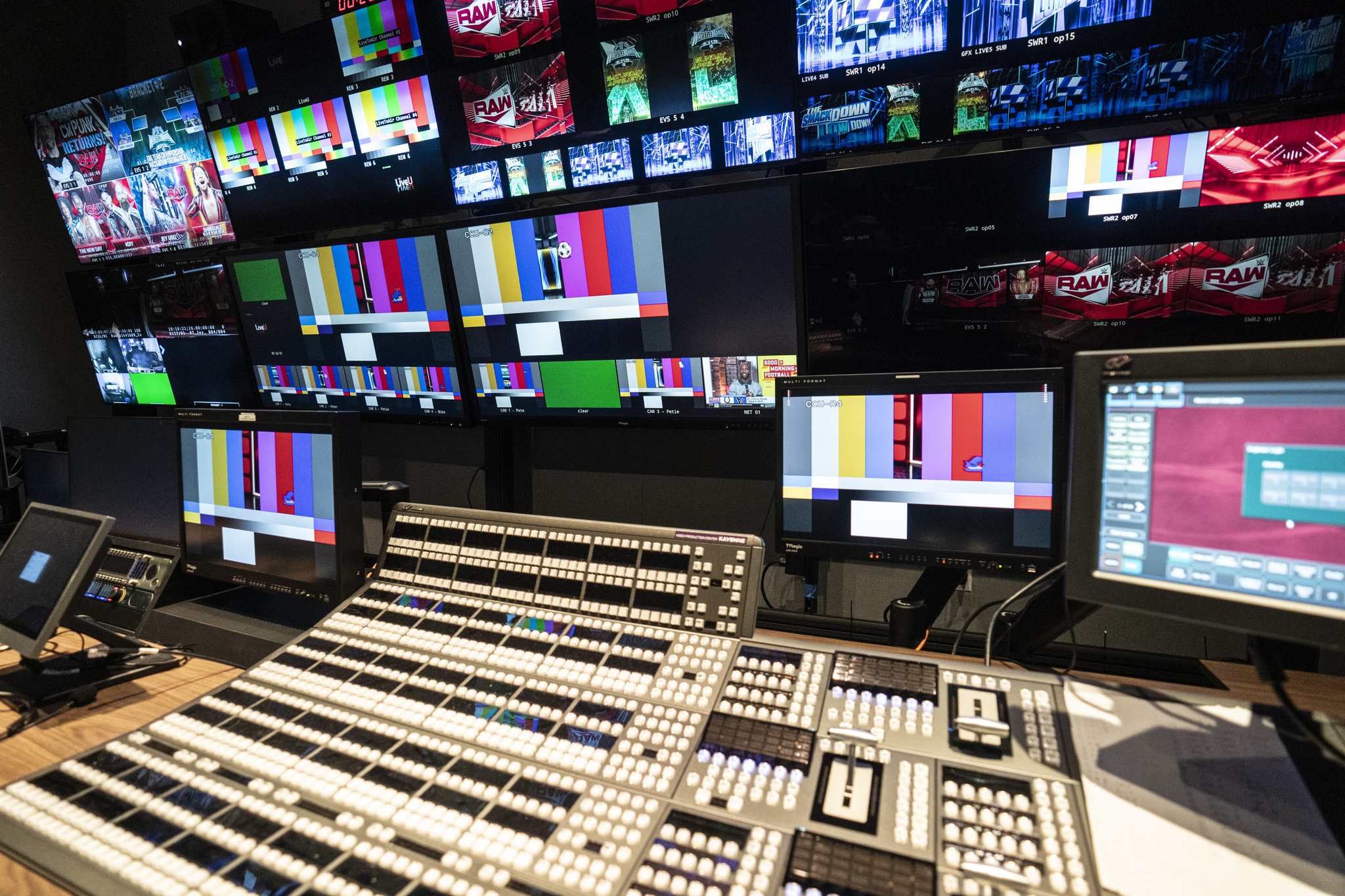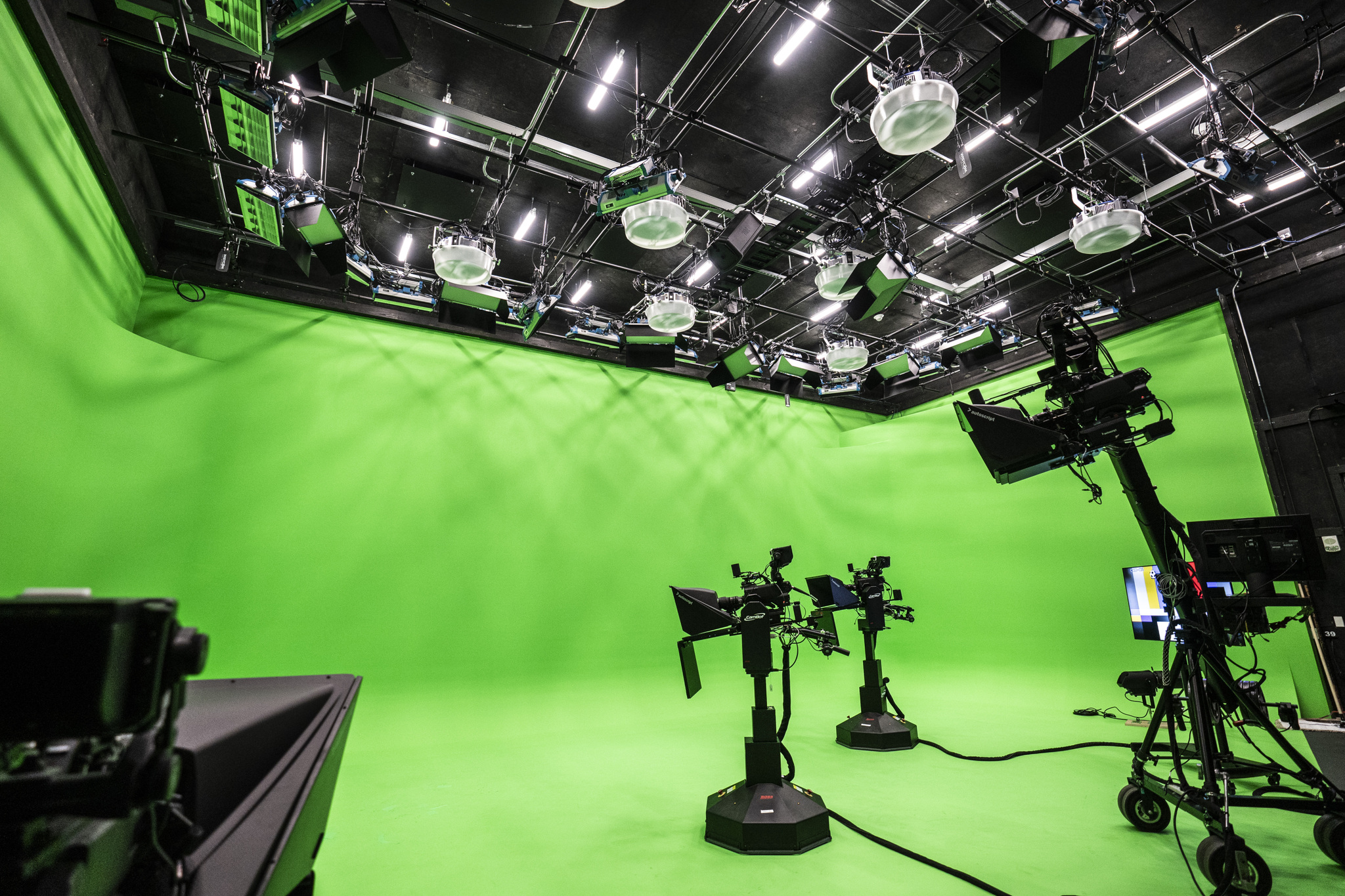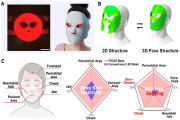The facility is expected to enhance production quality, versatility, and efficiency
The Studios at WWE, a new 30,040-sq.-ft., state-of-the-art production facility in Stamford, CT, is designed to give both the WWE and external clients new opportunities for production in the New York Tri-State Area. Its five studios feature a cutting-edge virtual-production stage, built in collaboration with AbelCine and Meptik, and the latest-generation technology from Sony Electronics and Disguise.

The new WWE facility features two control rooms.
“We’ve been bringing people in over the past few days to look at the space that we created,” says Joe Solari, VP, studio operations, WWE. “I think everybody’s very excited to get in there and to create on the stages. It gives us new tools and a new canvas to push the limits of what we do here at the WWE. We can take our productions to the next level and really increase our fan engagement.”
The five studios include a 5,000-sq.-ft. main studio, 1,500-sq-ft. Cyclorama studio, 1,500-sq.-ft. volumetric LED studio (to open later this spring), and two insert stages of around 600 sq. ft. each (there is also a photo studio that is about 1,000 sq. ft.).
Production technologies will enable WWE to tell more-dynamic stories; enhance production quality, versatility, and efficiency; and serve a broad spectrum of clientele across broadcast, film, and production. The full-service facility also houses two production-control rooms, two live-audio rooms, robotic-camera control, two playback rooms, editing suites, seven post-audio suites, two green rooms, dressing rooms, and office space.

The new WWE facility has a green-screen studio as well as an LED virtual-production studio.
Beyond best-in-class production offerings, The Studios at WWE is equipped with a purpose-built virtual-production stage housed in Studio 3. Although most people associate volumetric LED capture with shows like The Mandalorian, the WWE studio demonstrates that a massive studio with massive LED walls is not necessary for a massive look.
“Our wall is around 14 ft. high and 32 ft. wide,” Solari points out, “but, with the virtual extensions, it can look bigger on camera than it is in person. When you’re looking through the lens, the wall is going to be as big as we need it to be.”
Equipment and service provider AbelCine provided design and installation of camera and lighting for the studios, bringing in Meptik virtual-production specialists, who spearheaded design, installation, and integration of the virtual-production stage. Meptik’s team of creative and technical experts boasts extensive experience in virtual production, having integrated virtual-production workflows for clients ranging from major broadcasters to educational facilities.
“[Meptik co-founder] Nick Rivero and his team have been wonderful,” says Solari, “and helped guide us through the decision-making process in designing the room to make it flexible for the variety of shoots we intend to do. The sky’s the limit with those sorts of volume walls: if you can dream something up, you can do it.”
The LED stage leverages Sony’s latest-generation Crystal LED Verona modular-display technology, and Solari says it is an astounding product that takes every preconceived notion of LED and turns it on its head: “When I first saw it, I couldn’t even process what I was looking at, because it is that fundamentally different from any tile that I have seen before. The clarity and color gamut we’re able to get, along with the blacks and anti-reflection properties, are something I have never seen before.”
Verona is durable because the LED diodes are encapsulated, he adds. “You’re not going to see a lot of the problems other walls have. Also, the heat output is almost nonexistent, which is a testament to Sony’s R&D.”
WWE is the first U.S. facility to install Crystal LED Verona, implementing a total of 158 cabinets across its main wall and auxiliary carts.
In addition, Studio 3 will feature Sony’s Virtual Production Tool Set, which is designed to tackle common problems with virtual production and to support quality in-camera VFX, as well as Sony’s flagship full-frame VENICE 2 digital cinema camera. The combination of products will allow WWE to leverage a color-accurate ecosystem to bring quality and efficiencies to productions.
The next-generation production stage is powered by the Emmy Award-winning visual-experience platform Disguise, an advanced and integrated virtual-production workflow. Three Disguise VX 4+ media servers were chosen for their playback performance and flexibility to power content of any size, format, and complexity, enabling WWE to deliver next-generation sports and media entertainment.
“I don’t think there is anything in Connecticut right now that even comes close to what we built here,” says Solari, “not just the studio space but the amount of production support that we have.”





 CN
TW
EN
CN
TW
EN







